Blame it on the fjords. Specifically Geiranger. If it hadn't been declared a World Heritage Site for its natural value, if I hadn't looked at impressive photos of it, if I hadn't suffered from the Norwegian film The Wave...
Then I would not have insisted on wanting to see with my own eyes that magnificent tongue of water that flooded the land to create a steep valley of green cliffs with imposing waterfalls. And I wouldn't have fallen in love with Norway either.
With vast distances between north and south, the idea here was to stick to the fjord region, Fjord Norway, from Bergen to Molde, and follow some of the 18 scenic routes –at least in part– that cross the country.
The old secondary roads once little traveled They are, thanks to a government initiative – a project that has taken more than two decades to complete – quite a claim in themselves.
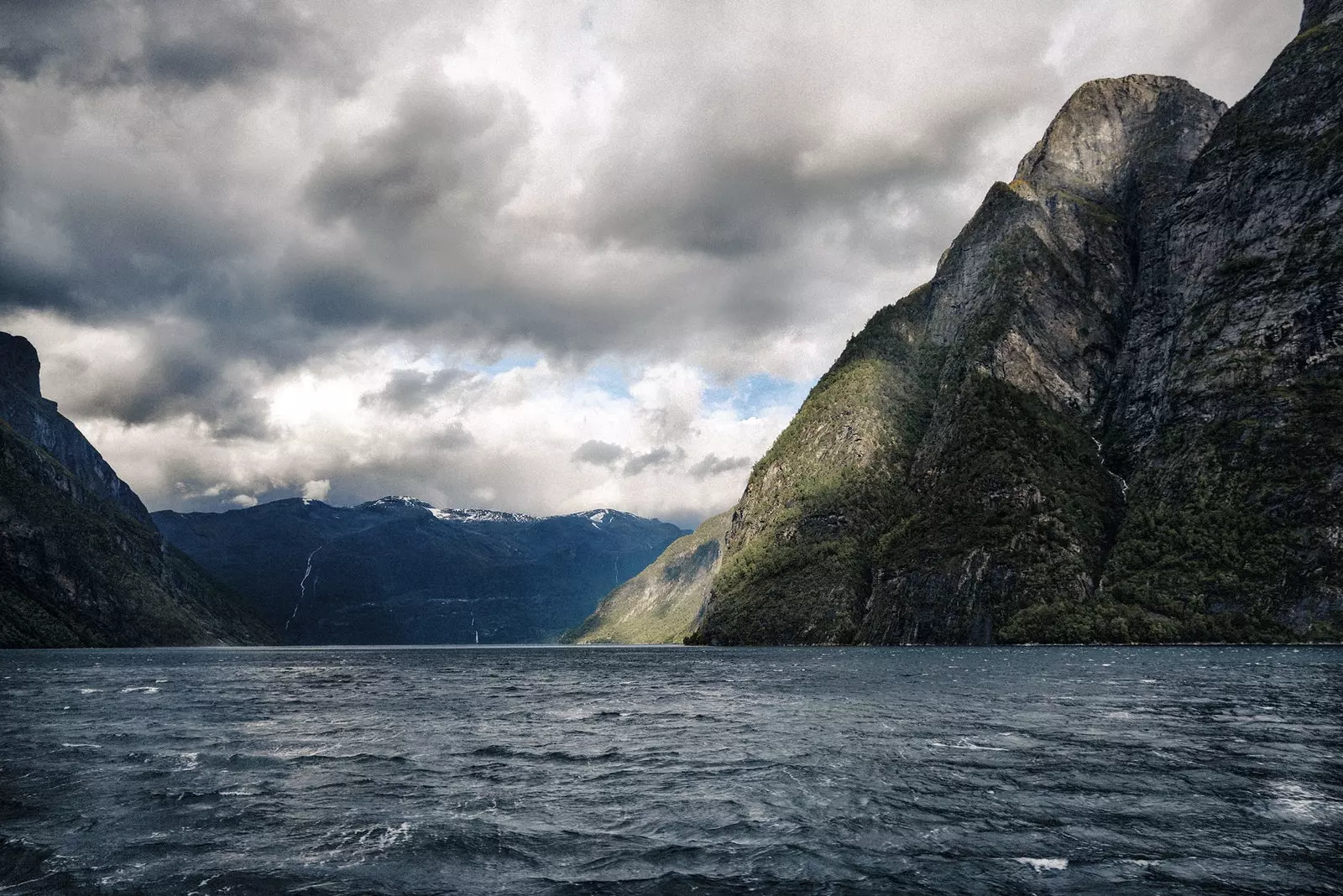
Geirangerfjord.
With more than 2,136 kilometres, they cover western, central and northern Norway along the most beautiful stretches of road in the country, that have been seasoned with art, architecture, monuments, viewpoints and even unusual bathrooms, to enjoy a more complete experience.
The works have been designed by young Norwegian architects and studios with a high quality requirement, such as Snøhetta, Reiulf Ramstad Arkitekter, Jensen & Skodvin, and Carl-Viggo Hølmebakk , all of them guarantee of surprise and absolutely spectacular.
BERGEN, THE CITY OF RAIN
Our starting point is Bergen, known for being the entrance to the fjords. This port city, one of the most important in the Hanseatic League, is now Norway's largest tourist cruise port and also one of the most beautiful in the country.
Bergen has the highest rainfall in Europe, so it's no surprise that it's raining on our arrival. However, the water does not tarnish the beauty of Brygge, its oldest neighborhood and a World Heritage Site.
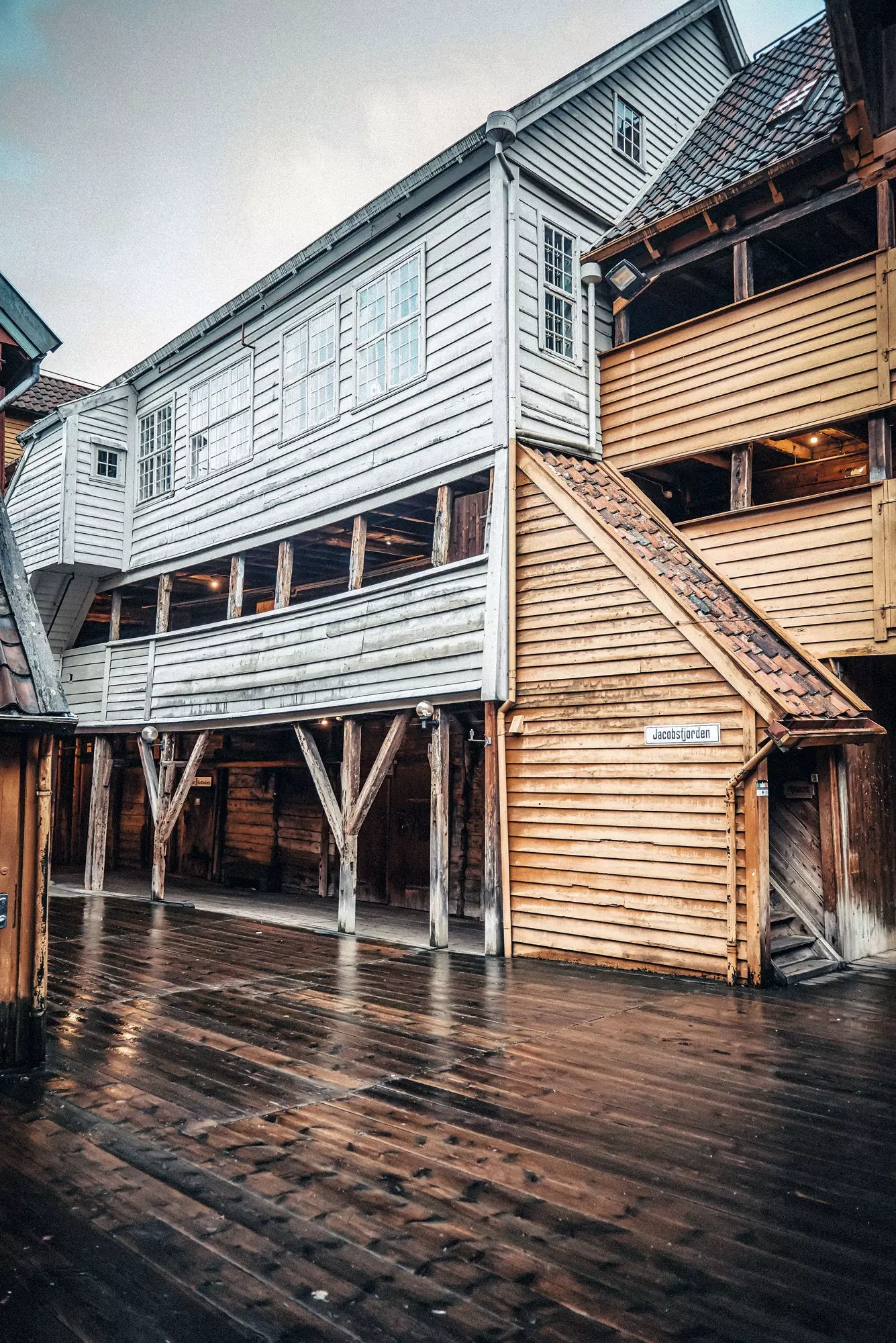
Brygge, Bergen's old quarter, a UNESCO World Heritage Site.
Through the drops of water glimpses the row of colorfully painted wooden houses that illuminate the seafront as if it were a rainbow.
The city was destroyed by several fires over the years. Especially devastating was that of 1702, which reduced it to ashes. However, it was rebuilt on the same original foundations from the 12th century.
Walking through this area you imagine the merchants of the Hanseatic League doing business in this labyrinth of narrow alleys in which, from time to time, small squares of irregular shapes open up.
to eat in the Fisketorget, the open-air market offering all kinds of fresh fish and seafood , we must hurry, because it closes at three in the afternoon.
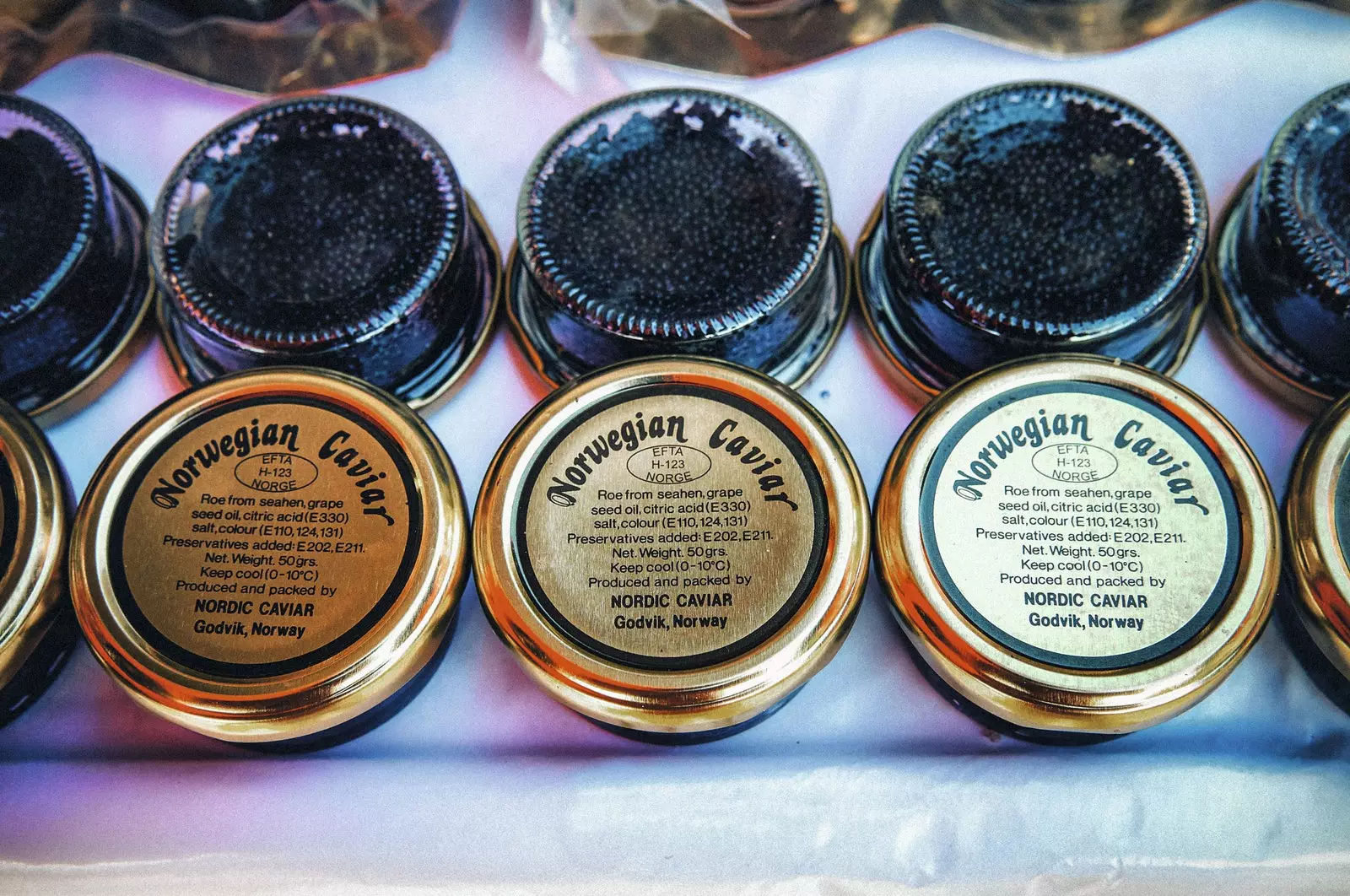
Norwegian caviar at the Fisketorget market in Bergen.
SINGULAR CONSTRUCTIONS
The rain is subsiding and, with a full stomach, We took the opportunity to ascend with the funicular to the top of Mount Fløyen. From here you will enjoy a general view of the city, the port and the seven mountains that surround it.
Taking the road from Bergen in the direction of Balestrand we cannot avoid stopping at a section that seems idyllic. A pair of wooden cabins darkened by the passage of time and with the roof covered with grass –a natural resource to provide insulation– are the only sign of life that dots this green meadow, far from everything and everyone.
Serenity and a strange joy invade us: is the connection with nature, the call friluftsliv, that will no longer abandon us during the entire trip.
The road continues zigzag up the side of the mountain. We better get used to the curves, because it seems that this is not going to be the only winding section.
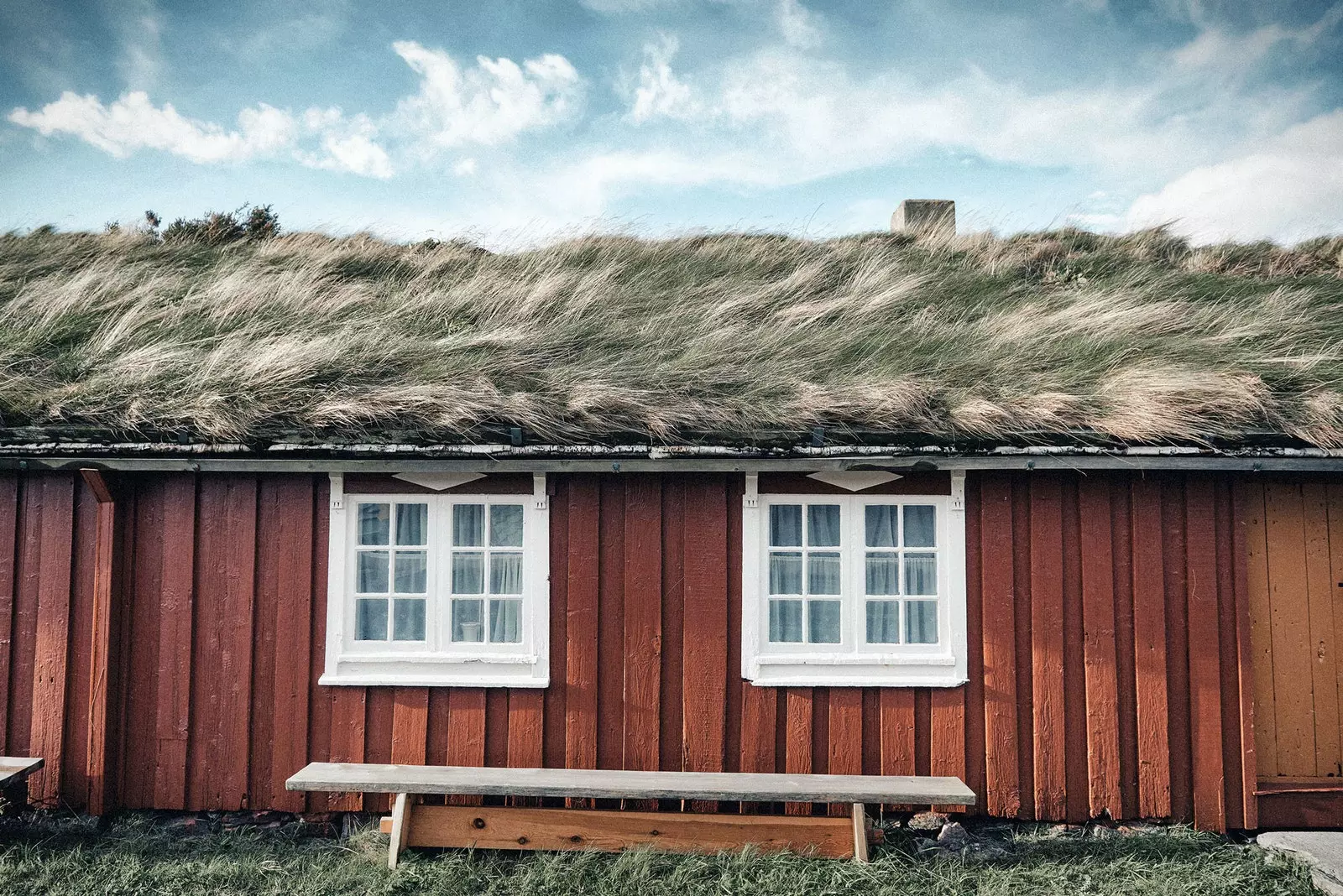
Cottage with grass on the roof in Håholmen.
On the other side of the mountain appears one of the few stvkirke (Medieval Christian churches built entirely of wood) that survived the 1851 law.
This law established that the temples should have space for, at least, a third of the population of the parish, for which many were demolished. The small Hopperstad church in Vik is one of only 28 left in all of Norway.
Built around the year 1130, Although largely rebuilt in the 19th century, it is considered one of the most picturesque in the entire country.
We stop at Balestrand to eat –a traditional salmon with a vegetable garnish– in the historic hotel Kviknes, located in a Swiss-style building, run from the beginning by the Kviknes family.
In addition to the architectural singularity, its strong point is its location on the banks of the Sognefjord, the longest and deepest fjord in the country. Many trekking trails and boat or kayak excursions start from here.
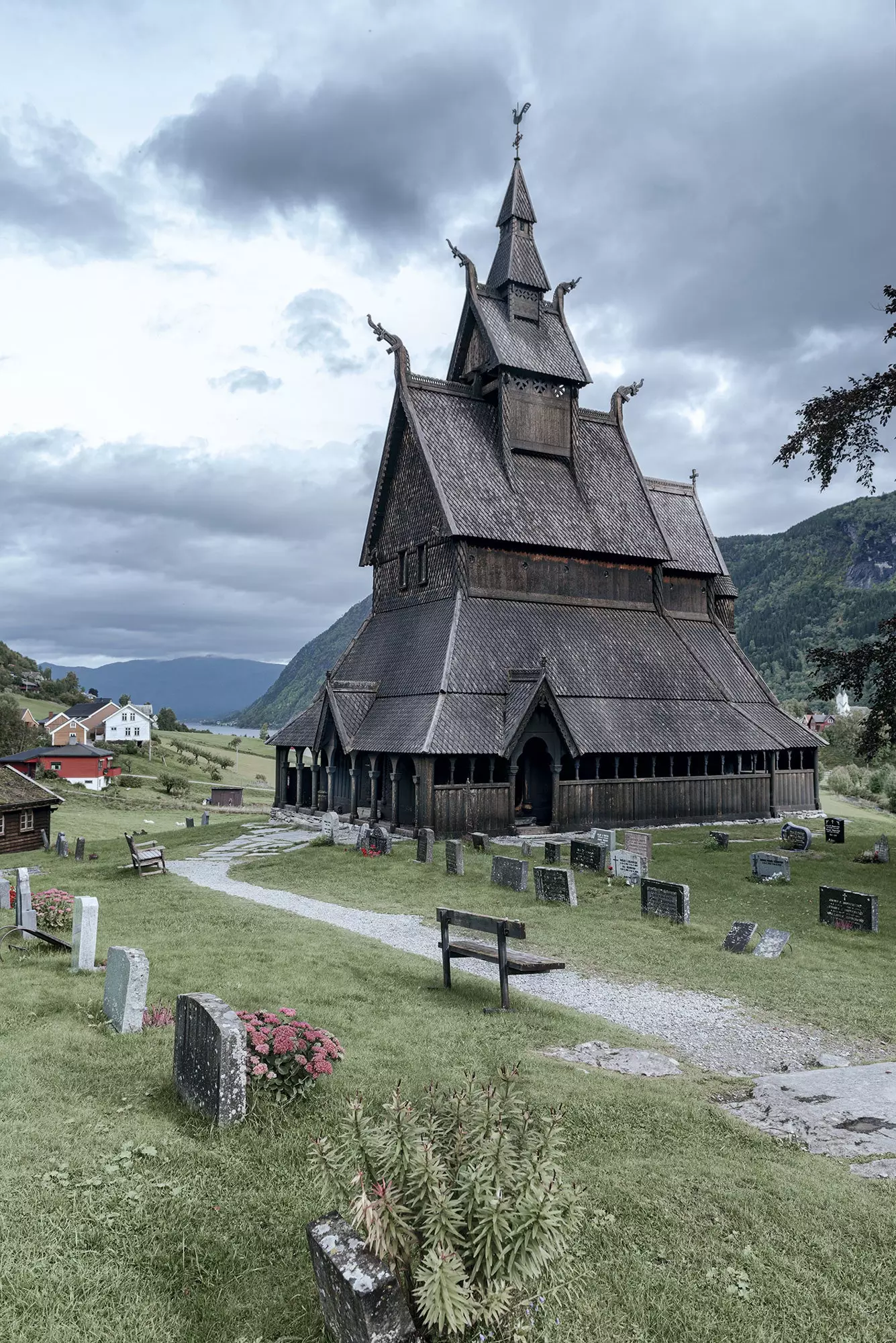
Medieval Christian church Hopperstad in Vik.
GAULARFJELLET, WATERFALLS AND UNMATCHED VIEWPOINTS
The trip continues along one of the panoramic routes, that of the Gaularfjellet road, the Gaular mountain.
The path runs through the branches of the Sogne fjord, next to small farms and beautiful natural landscapes, until it reaches the viewpoint of Utsikten, a true architectural work of art balanced on the edge of the mountain.
Its name, which translated means 'the view', gives a clue about what you are going to find up there, at 703 meters high.
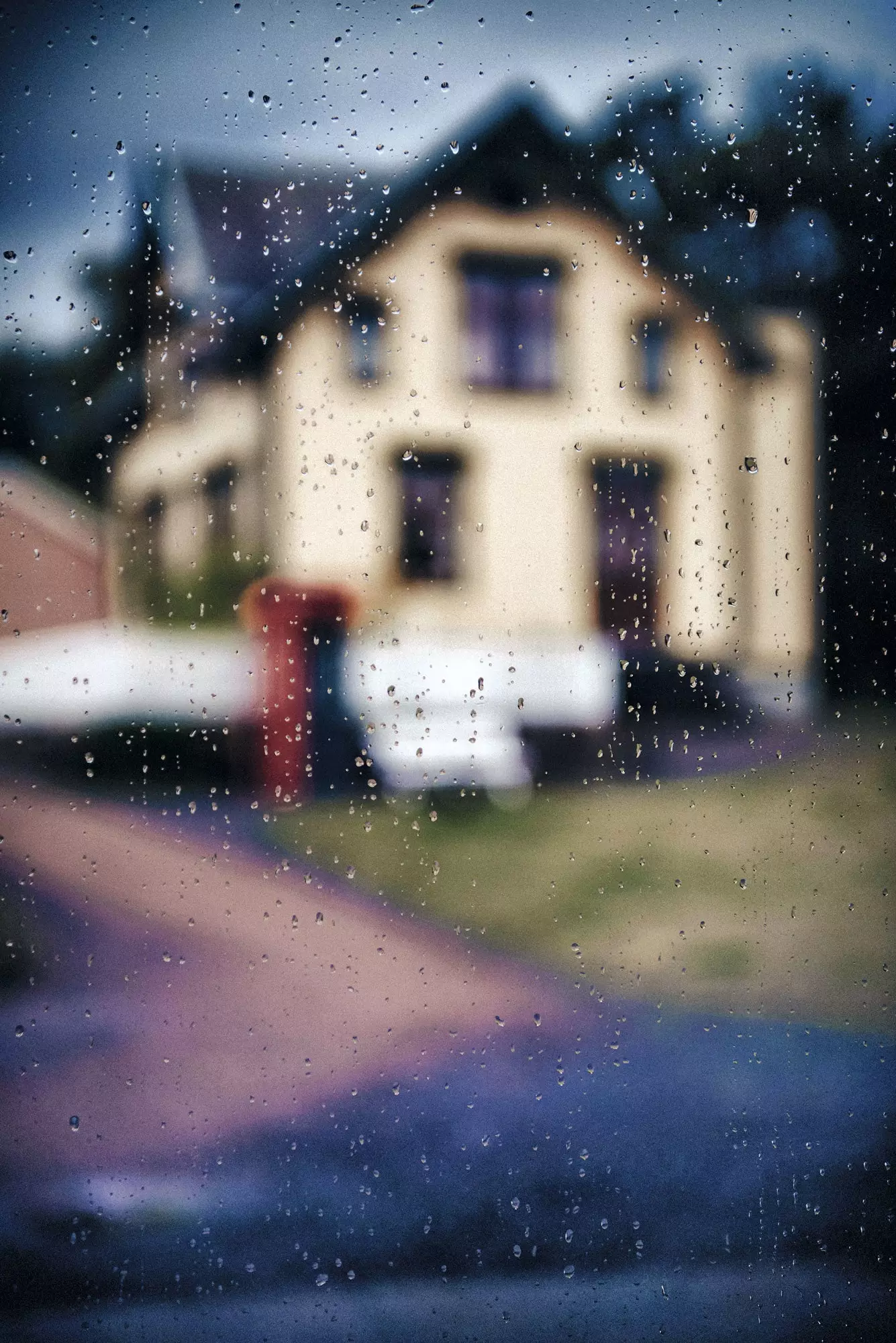
Traditional house through the rain.
Another of the treasures of this route is the Gaular River, one of the few protected water courses that offers everything from wild rapids and waterfalls to calmer stretches where the water flows calmly.
We want to feel the force of the river, so we stop to cross the narrow flexible steel bridge that flies over the Likholefossen waterfall.
There is no other option but to fasten your raincoat well if you don't want to end up soaking wet, but the sensation provided by the force of the water is indescribable and well worth a few splashes.
Before reaching Førde, where we will spend the night, we stop several times at the lakes that appear on the side of the road. We need to feel that peace again, that friluftsliv. And what if we succeed, because not a soul is found. Wherever you look you only see nature: forests, mountains, water... and silence.
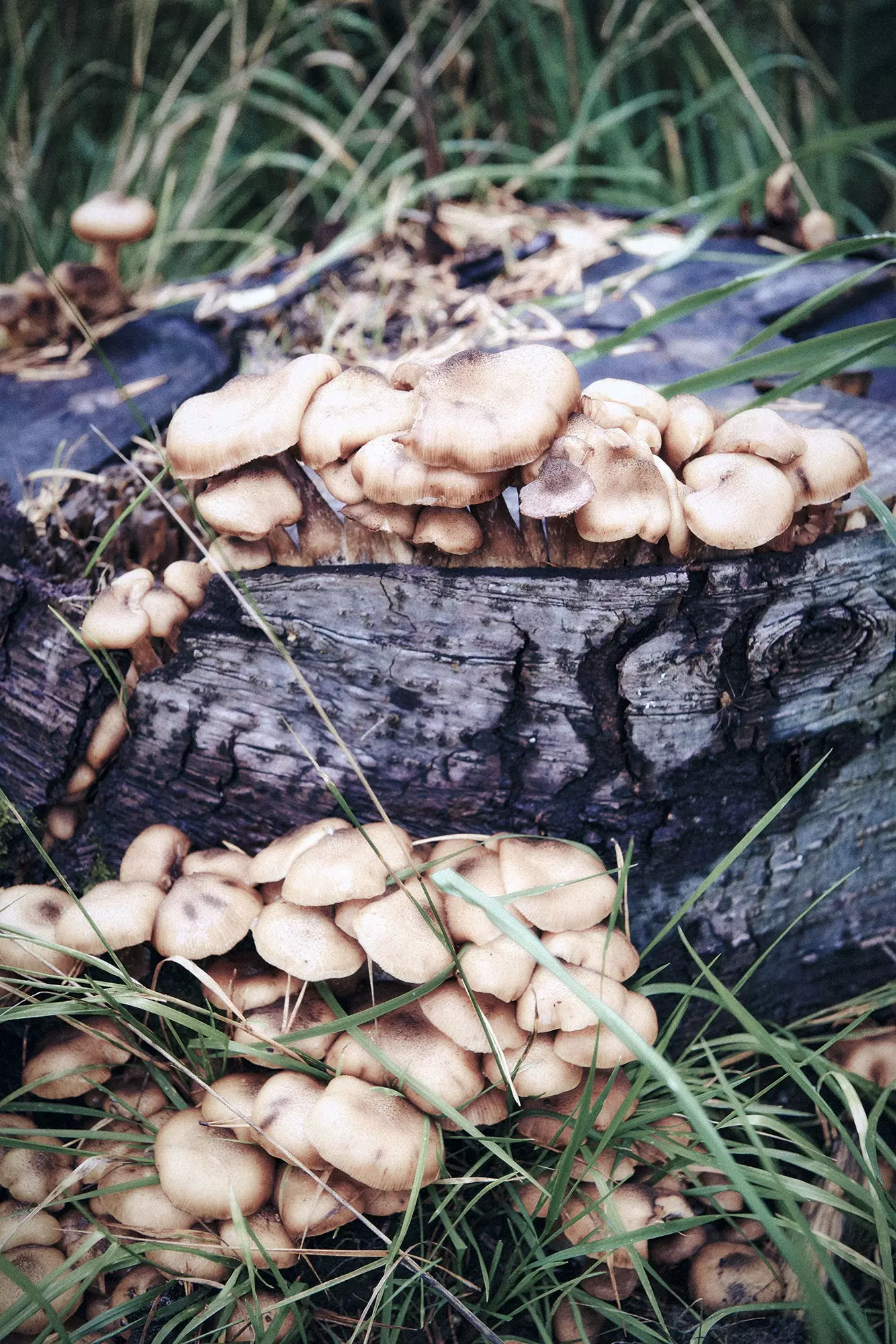
Wherever you look: nature.
BRIKSDALSBREEN GLACIER
At dawn we leave for Olden to reach the Josedalsbreen National Park and visit the Briksdalsbreen, one of the most accessible arms of the glacier.
They offer the possibility of making the ascent on foot – it is easy, although steep – or climbing a troll car, a convertible SUV equipped with waterproof blankets, because the road passes very close to waterfalls and waterfalls.
As we are 'in mode friluftsliv’ we prefer the challenge of climbing by ourselves, a worthwhile decision. The glacier, which ends in a small lake 300 meters above sea level, is fascinating and constantly moving, so you will never see it the same.
Very close to Olden is the Loen Skylift, an impressive cable car inaugurated in 2017 that takes us from the shores of the Nordfjord to the top of the Hoven mountain, at 1,011 meters high, in a vertiginous ascent of just five minutes.
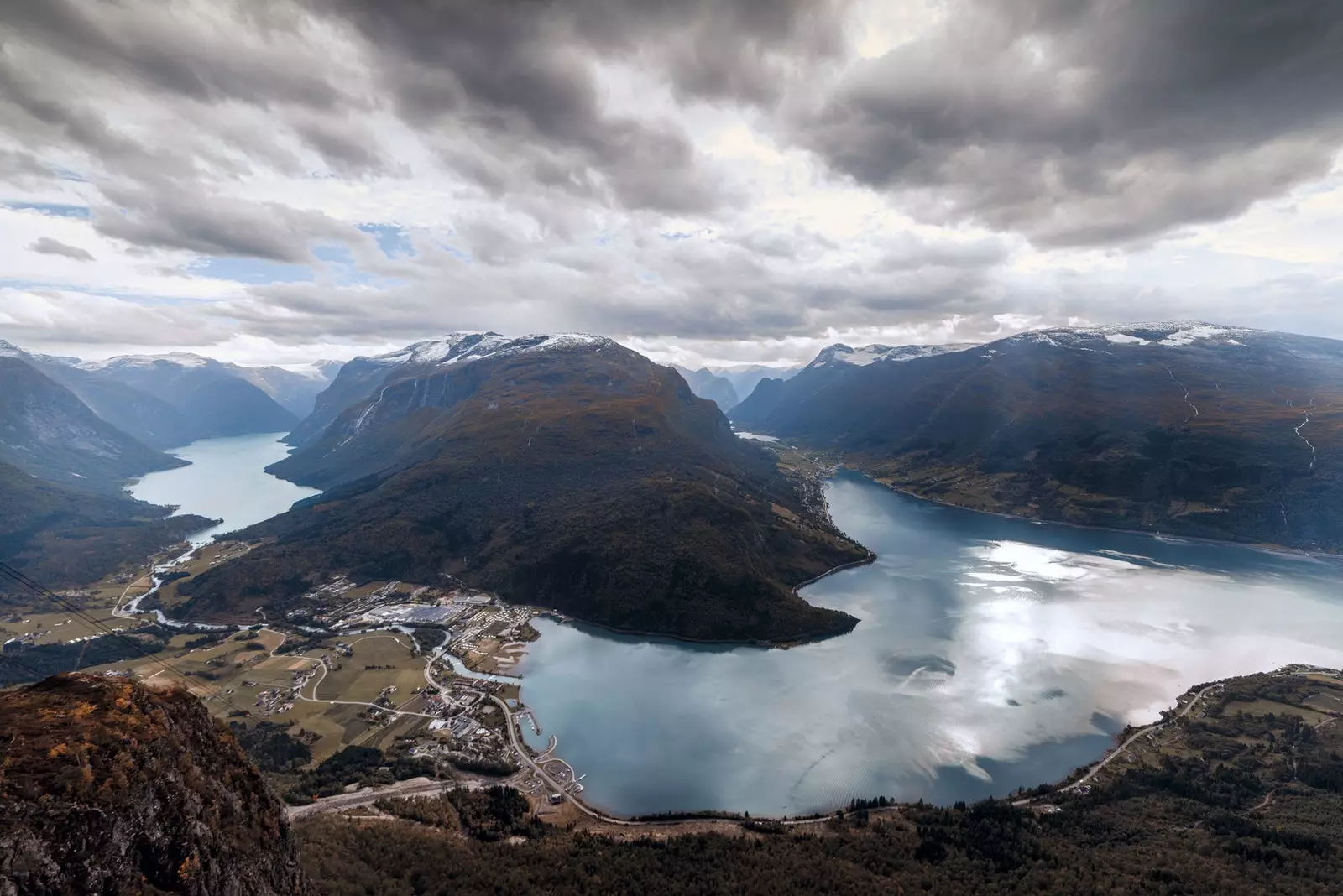
Panoramic from Loen Skylift.
The most fearful or with vertigo will not dare to approach the glass railings of the viewpoint, since they are slightly tilted outwards and accentuate the disturbing sensation of being suspended in the air.
We look out and one of the most spectacular panoramas you can imagine unfolds. Its 210º views are enough to cover Skåla Mountain, Lovatnet Lake, Jostedalsbreen Glacier, Olden Village and Nordfjord.
From this point there is also a via ferrata for the more adventurous. The price of this attraction is not cheap, but the experience is worth it.
After the descent -which is just as fast-, we set course for Geirangerfjord, the fjord that has brought us here. Observed from the top of Flydalsjuvet viewpoint, probably the place from which it has been photographed most times, its magnitude can be appreciated, although not its length.
Geirangerfjord is part of the UNESCO Heritage and is considered one of the most important natural attractions in the country. Boat trips depart from the charming town of Geiranger and, of course, we don't miss the opportunity to see the fjord up close.
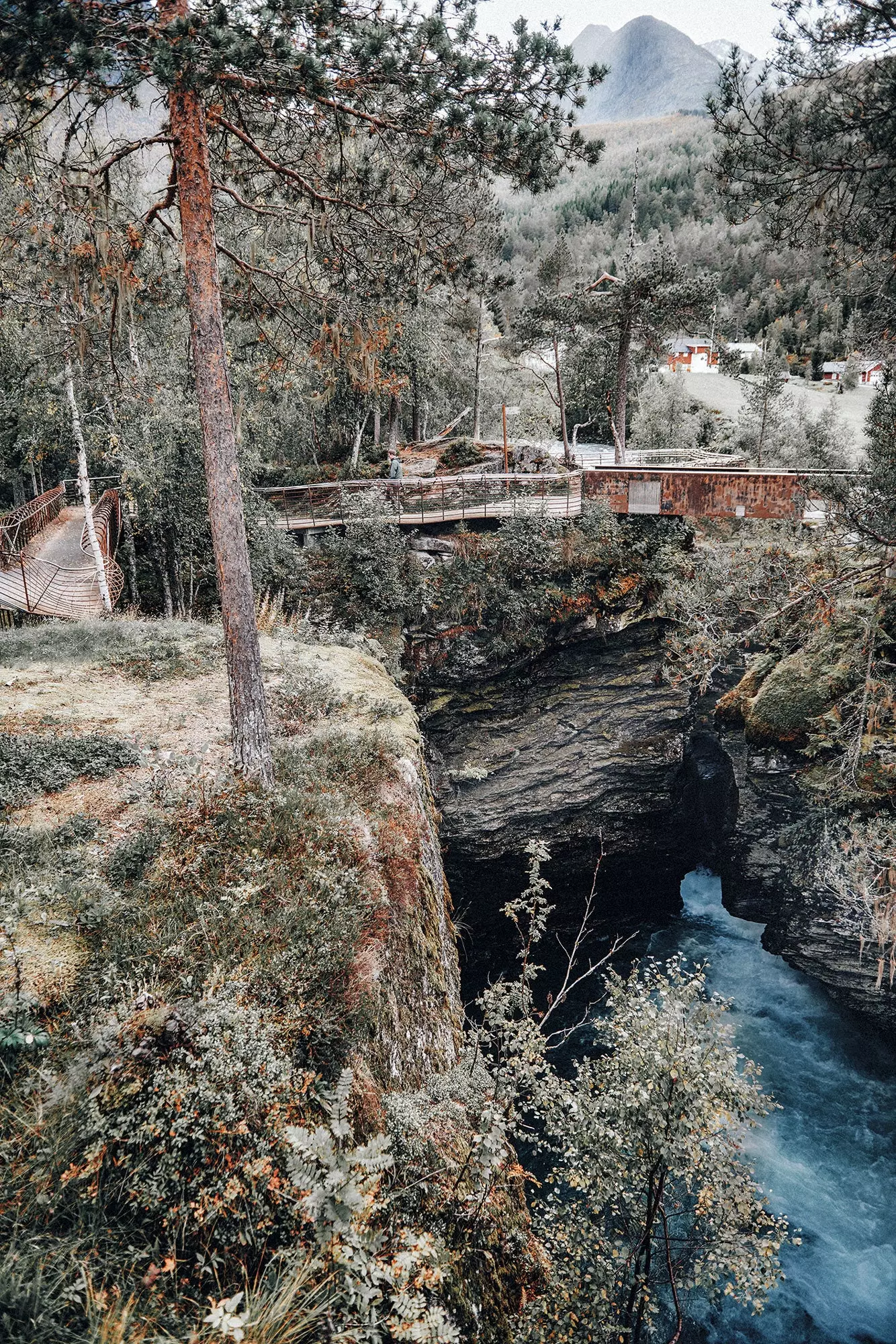
Gudbrandsjuvet viewpoint.
Impressive waterfalls tumble down the almost vertical slopes of the mountains, between them the famous Syv Søstrene (Seven Sisters), Friaren (The Suitor) and Brudesløret (The Wedding Veil), creating a display of changing rainbows that leaves us speechless and that reminds us how small we are before the greatness of nature.
After having finally sailed through the waters of the fjord, it's time to see it again from a bird's eye view. We start the climb up Eagle Road, a steep road that leaves Geiranger in the direction of Eidsdal.
It was inaugurated in 1955 and connected the town with the rest of the world throughout the year, since until then it remained isolated in winter. From the Ørnesvingen viewpoint we say goodbye to the fjord and set off towards Trollstiegen.
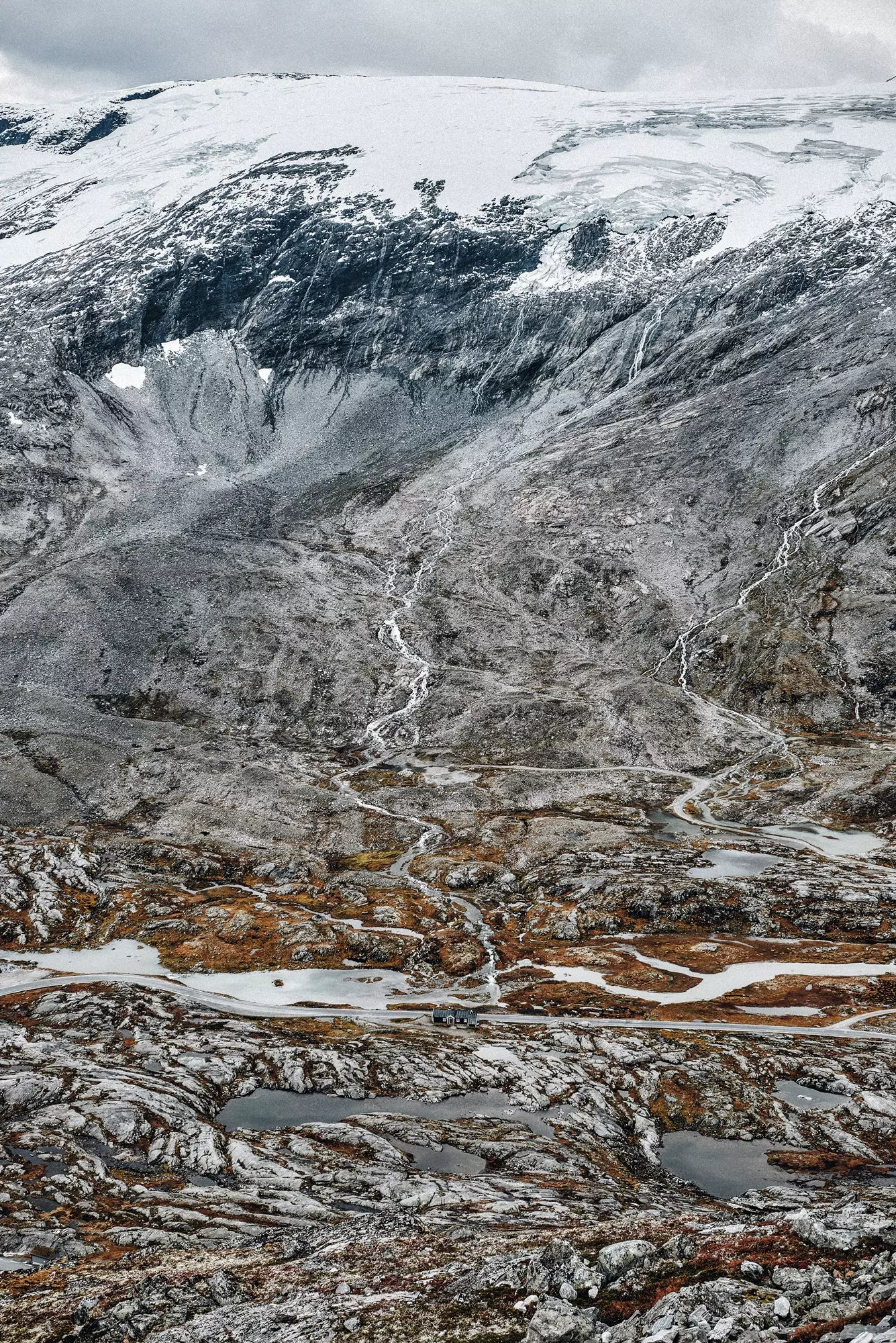
View from Dalsnibba viewpoint.
THE LADDER OF THE TROLLS
Incredible as it may seem, Norwegians believe in the trolls, those giant beings that live at night and find humans very appetizing. Such is the roots of these beings in the Norwegian culture that they have baptized as trollstigen (the troll ladder) to a winding and steep road nestled between rugged mountains and full of curves.
Inaugurated in 1936, it is part of the Geiranger-Trollstigen scenic route, one of the most dramatic and exciting to drive on, due to its 180º curves.
At the top there is a platform from which three viewpoints emerge, each with wonderful views of the road and the the Bispen, Kongen, Dronningen, Stigbottshornet and Storgrovfjellet mountains, all with a height of around 1,500 meters.
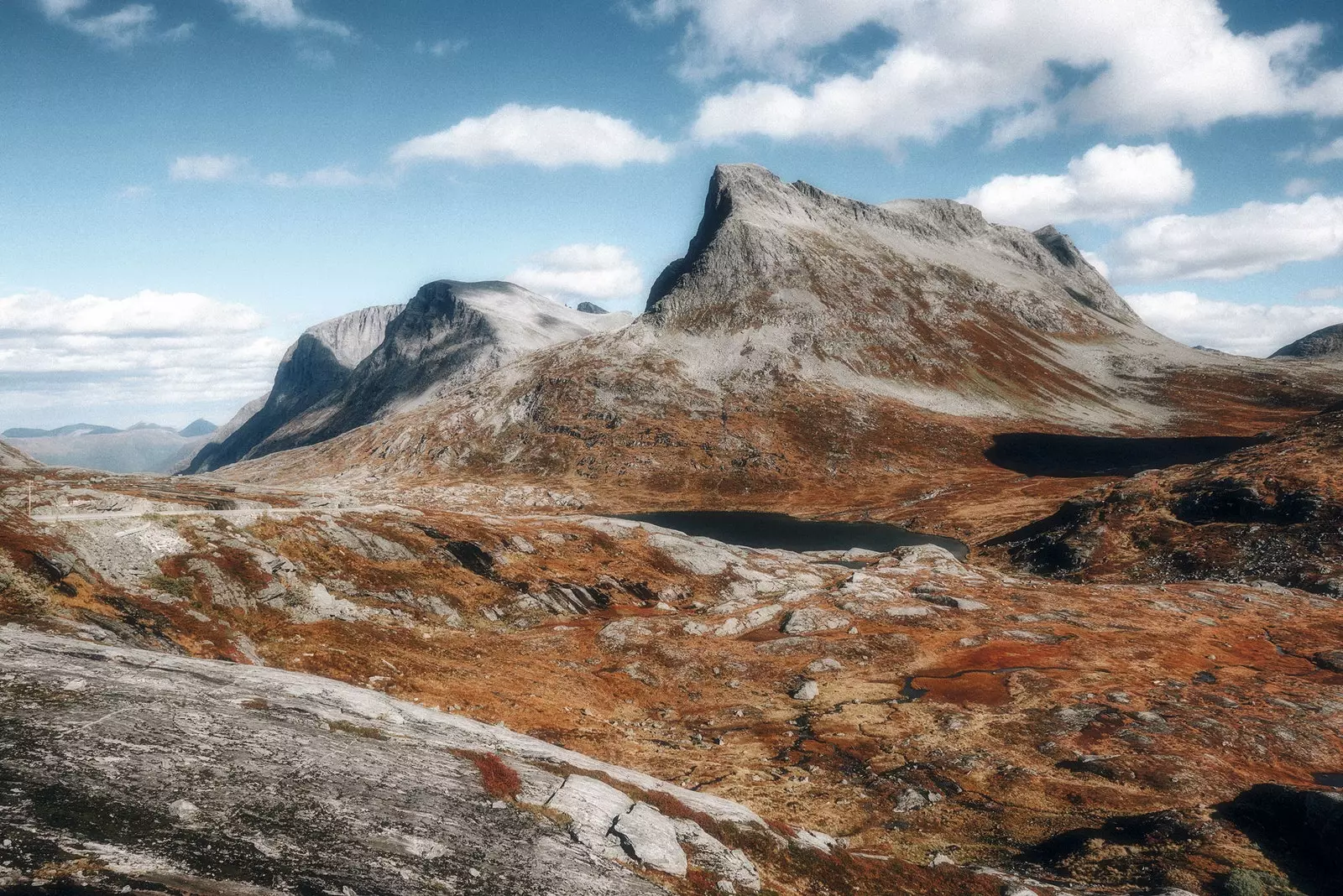
I walk towards Dalsnibba viewpoint.
Arriving in the city of Molde we visit the Romsdal Museum, known as Corona by the shape of its main building (it means crown), a largely open-air museum that displays what Norwegian houses were like between the 17th and 20th centuries.
They have been brought from various parts of the country and organized in such a way that They resemble a village.
It is interesting to visit a tiny and dark church – where weddings are still officiated – and the interior of one of the houses, that includes the original furniture, as if its owners were going to return at any moment. In the Krona there is a very pleasant review of Norwegian history and culture.
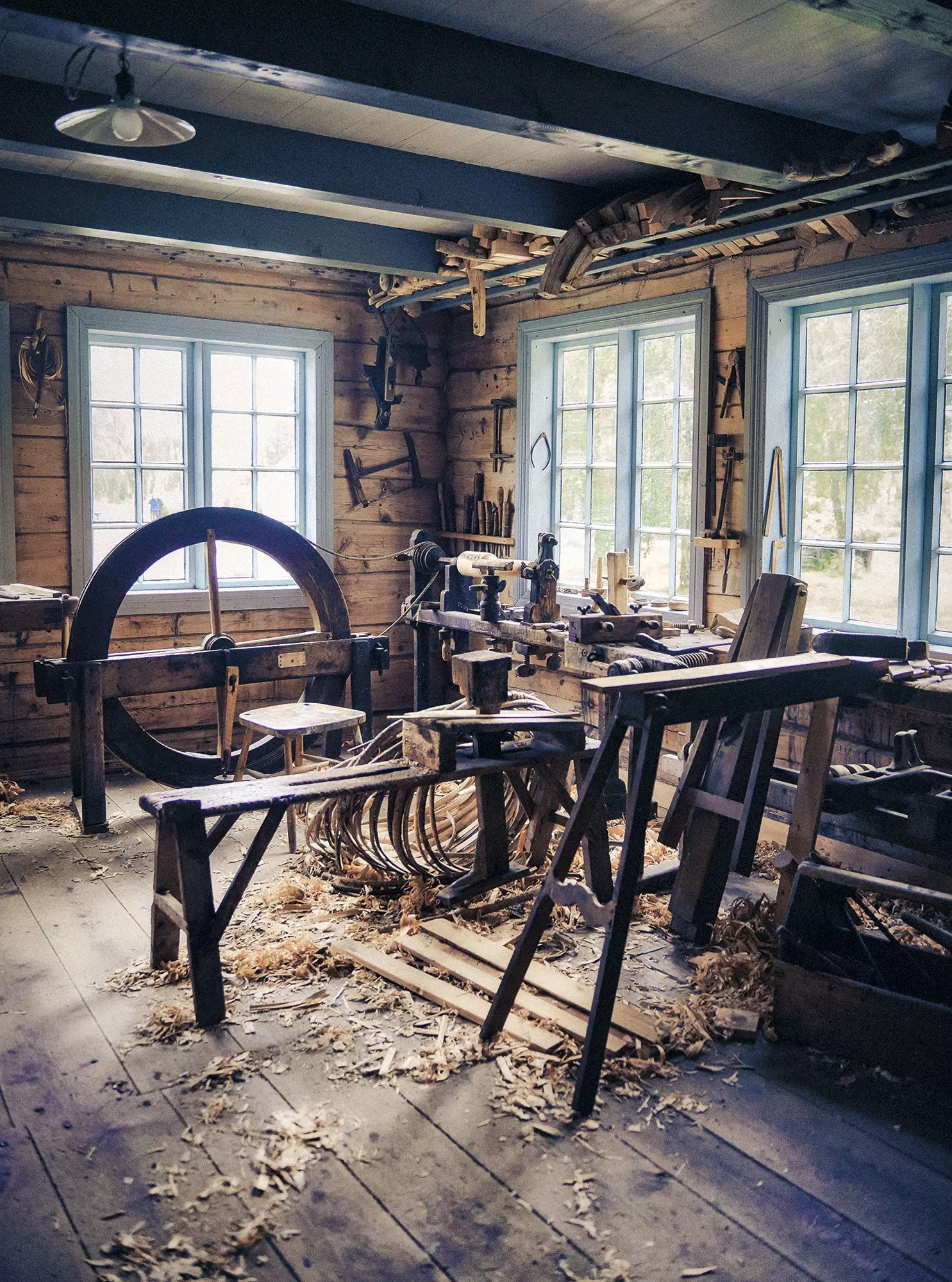
Workshop recreation at the Krona museum.
A CAPRICHO, SLEEP ON AN ISLAND
From Molde we access the Atlantic road, one of the shortest panoramic routes, only 36 km. However, every kilometer traveled leaves one breathless. To jump from island to island, you travel through narrow bridges suspended over the sea. It's like surfing, but to the beast.
In Geitøya we are picked up by an ancient Viking ship. It is the ferry for hotel-island guests Håholmen . In the old days, when cod was fished here, the town bustled with activity.
Over the years, the young people left for the city and it was abandoned for a long time, until the current owner had the brilliant idea of converting it into an idyllic place, preserving its original appearance, although providing it with modern comforts.
The rooms are located in the fishermen's houses of the s. XVIII, carefully restored. The tranquility that is breathed in the air and the sunset after a gourmet fish-based dinner in the restaurant Ytterbrygga They put the icing on the cake for this road trip. But this is not the end It is only the beginning of the idyll with Norway.
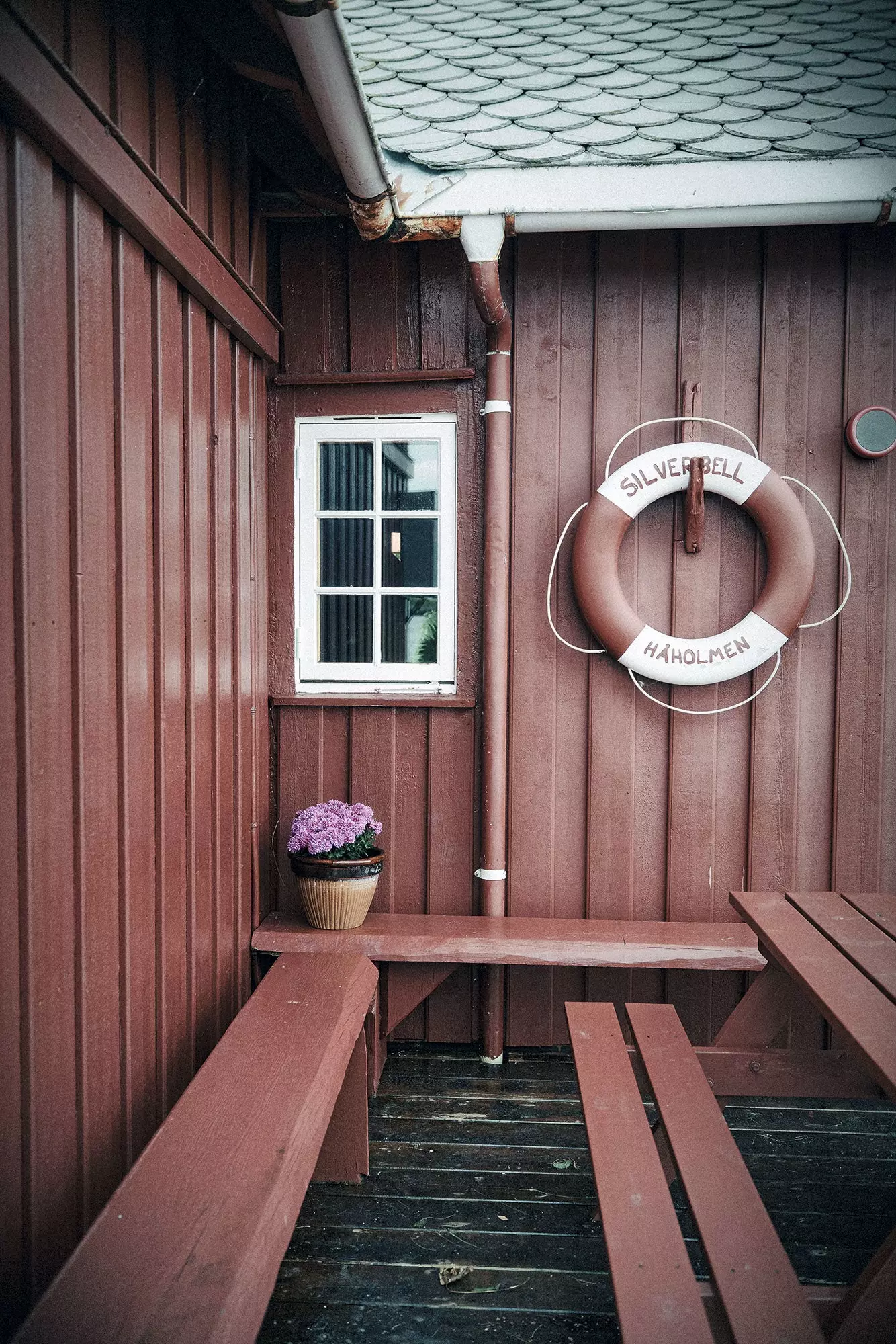
Hotel-island Håholmen.
JOURNEY NOTEBOOK
HOW TO GET Norwegian: The Norwegian company offers direct flights to Bergen from Alicante and Gran Canaria and with a stopover in Oslo from Madrid, Malaga, Barcelona and Palma de Mallorca.
WHERE TO SLEEP Camping: There is a curious law in Norway that allows you to pitch a tent anywhere (even in a private garden) for up to 48 hours, as long as you keep a distance of 150 m from the nearest house.
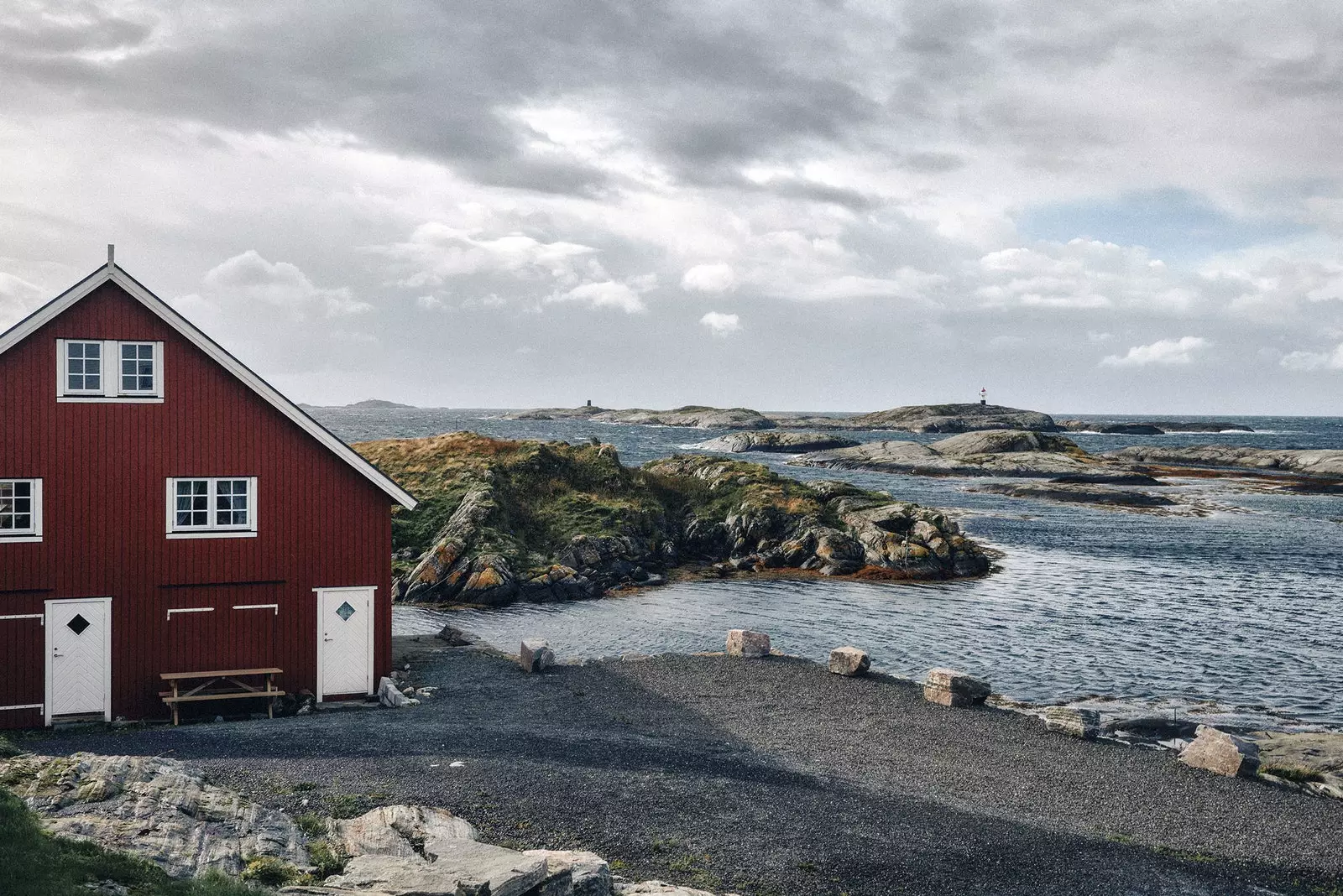
Bud fishing village.
Magic Hotel Korskirken (Bergen): For more comfort you have this central hotel, modern and functional.
Kviknès Hotel (Balestrand): In this town you have to sleep at least one night in this historic hotel, located in an impressive Swiss-style building built in 1877 on the banks of the fjord and which has been decorated with works of art and antiques that transport you to another era.
Hotel Geiranger (Geiranger): Despite having a population of just 200 inhabitants, Geiranger has a wide range of hotels. The Geiranger hotel stands out –which is engulfed by the water in the Norwegian film The Wave–, overlooking the fjord and which is a stone's throw from the pier.
Thon Hotel Moldefjord (Mold): Modern, colorful and welcoming, it has very special details, such as a different decoration in all the rooms and natural fruit and juices, which come directly from the director's garden.
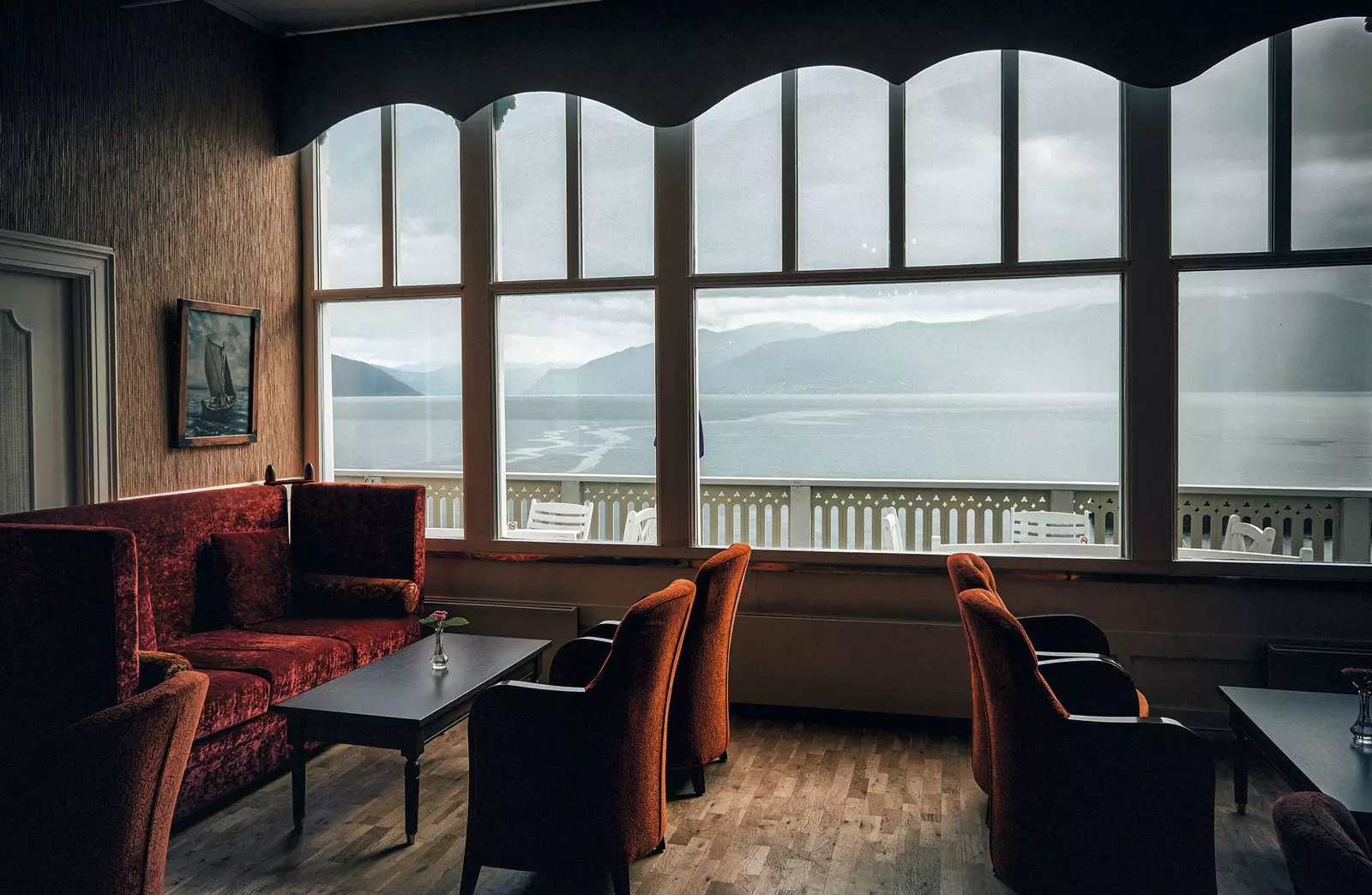
The historic Kviknes hotel in Balestrand.
WHERE TO EAT
Bryggen Tracteursted (Bergen): In Bergen you will find this restaurant located in the historic district of Brygge, which offers quality Norwegian cuisine in a traditional and cozy atmosphere.
Hoven Restaurant (Loen): One floor below the Loen Skylift observation deck is the Hoven Restaurant, with magnificent views. They bet on local ingredients to create simple but tasty dishes. It is advisable to make a reservation in advance.
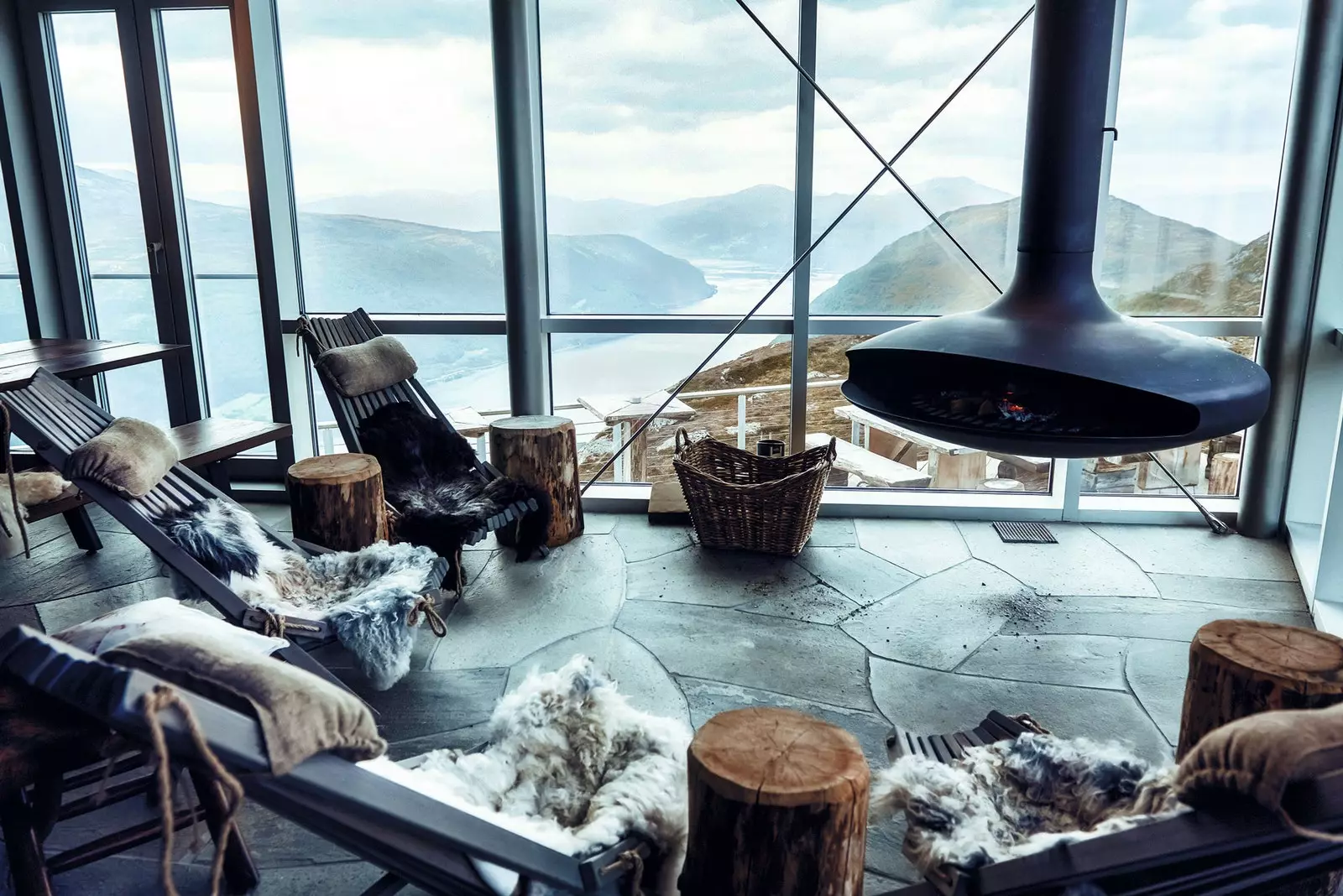
Restaurant at Loen Skylift.
TO DO
Plan your routes: Before making your trip, prepare and look for information on the official page of the panoramic routes.
SUBSCRIBE HERE to our newsletter and receive all the news from Condé Nast Traveler #YoSoyTraveler
